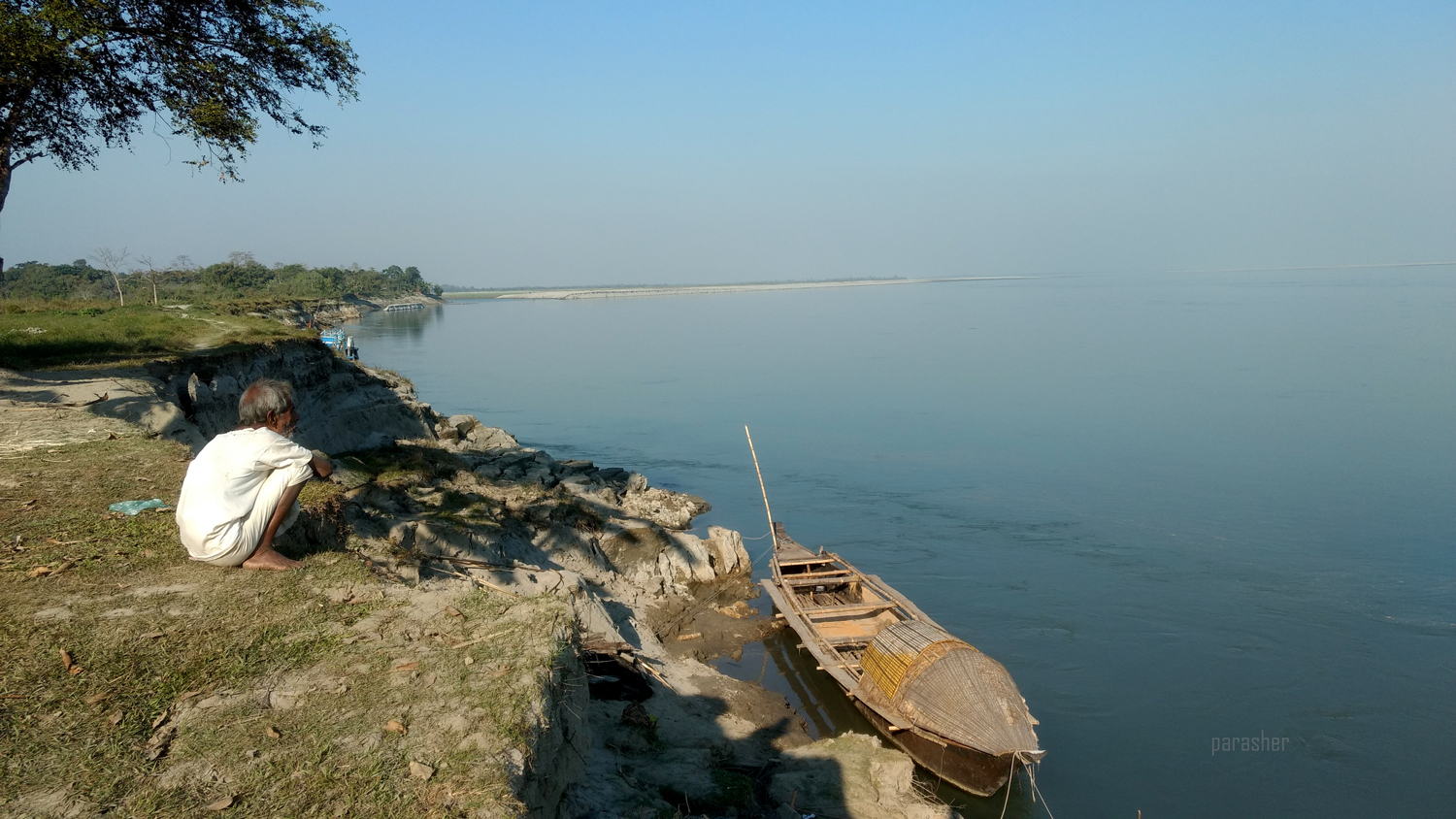
The Centre will incubate, curate and train a generation of young scholars making it the most imaginative approach anywhere to understand people and regions. This will generate an entirely different genre of storytelling about the regions that literally opens up new horizons in resolution, transformation and changing perceptions. For example, the future of journalism is about defying the ‘single story’ and opening up the possibility of multiple narratives. This then will be the breeding ground for the best in journalism practice and research that will also serve as an invaluable documentation centre conceiving academic frameworks for issues that impact everyday lives of people and the planet.
Vision
Interdisciplinarity; Contemporary; Information as Public Good; Institution Building as a process
Mission
Impact policy and governance; Output oriented; Publications; Brand oriented; Collaborative;
About
New Imaginations marks O.P. Jindal Global (Institution of Eminence Deemed To Be University)’s commitment to creating an international research centre in the comparative study of journalism and conflict studies in India’s forgotten homelands, for example India’s Northeast and Northwest.
These regions are typically studied and perceived through stereotypical framework by the media as well as the academia. The idea of this centre evokes New Imaginations to challenge the stereotype and offer an interdisciplinarity and contemporary platform for thought-experiments to understand, document and imagine the regions in ways that would make it a first of its kind research centre that contributes for public good. Here journalism as reportage and interpretation breaks the conventional stereotype that has reinforced current misunderstandings.
The very idea of New Imaginations rather than Reimagining spurs a whole set of questions pertinent to the two regions for example:
Members
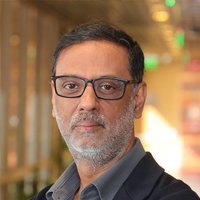 |
Director Kishalay Bhattacharjee Professor and Dean Award-winning journalist and author Director, New Imaginations Former Resident Editor NDTV |
.jpg) |
Advisory Board Tom Goldstein Founding Dean, Jindal School of Journalism and Communication |
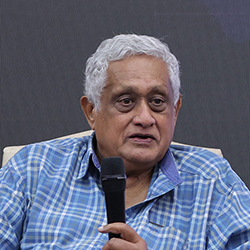 |
Shiv Visvanathan Professor, Jindal Global Law School and Director, Centre for the Study of Knowledge Systems, O.P. Jindal Global University |
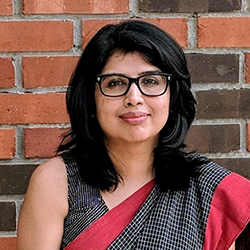 |
Sumana Roy Author and Poet Associate Professor, Ashoka University |
 |
Lalsawmliani Tochwaang Chief, Programmes Division, India International Centre |
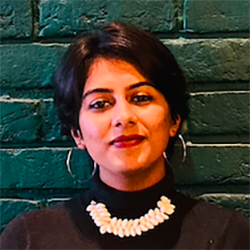 |
Research Assistant Ashima Sharma JSJC Alumni and journalist, Argus Media, London |
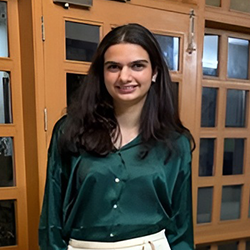 |
Student Komal Godara Journalism & Media Studies, 2024 Batch |
 |
Student Chenab Guha Journalism & Media Studies, 2025 Batch |
While each affiliated scholar will have an individual focus and expertise, the research undertaken at the New Imaginations will be clustered around 5 sub centres:
ArtEast – an annual festival on art, migration, displacement and livelihood, conceived, researched and presented by New Imaginations in collaboration with India International Centre, New Delhi.
https://www.arteastfestival.com/
The festival is curated by Kishalay Bhattacharjee Professor at O.P. Jindal Global (Institution of Eminence Deemed To Be University), Sonepat and Director, New Imaginations. ArtEast has been conceptualised as a multi-dimensional festival with research, talks, discussions, film screenings, performances, exhibitions and installations located in the different venues at the India International Centre.
ARTEAST 2021
Curated by Kishalay Bhattacharjee, ArtEast 2021: Tell me a Story was a virtual documentation of a very strong and sustained element of art-storytelling. Through paintings, illustrations, photo collages, visual poetry, dance, cinema and conversations, ArtEast 2021 was an attempt to understand and reinterpret narrative art practices.
The festival began as an attempt to try present India’s Northeast region and its neighborhood from a more contemporary perspective. But the project now seeks to go beyond the region and trace the lineage of art and narrative practices that defy geography and has been at odds to endure and sustain. The current health emergency has not only impacted traditional art but affected livelihoods of artists across the world. This year was the 5th edition of the festival.
lt invoked Art as Storytelling and showcased a slice of folk/traditional craft and contemporary art that were originally storytelling rituals with a visual and performative aspect that over time became a practice. Many such practices today suffer from lack of patronage or support and have either succumbed to commercial pressures or have slowly faded to the margins. Some have disappeared. Tell me a Story was an effort to revive our interest through an understanding and reinterpretation using the tools of new media to tell stories.
Launched in the spring of 2017 ArtEast was then presented by NFI and supported by The Sasakawa Peace Foundation in collaboration with India International Centre. ArtEast is a fringe art festival presenting emerging and leading local and international artists in all genres of the performing and visual arts. Currently, it is hosted by New Imaginations in collaboration with India International Centre and supported by O P Jindal Global University.
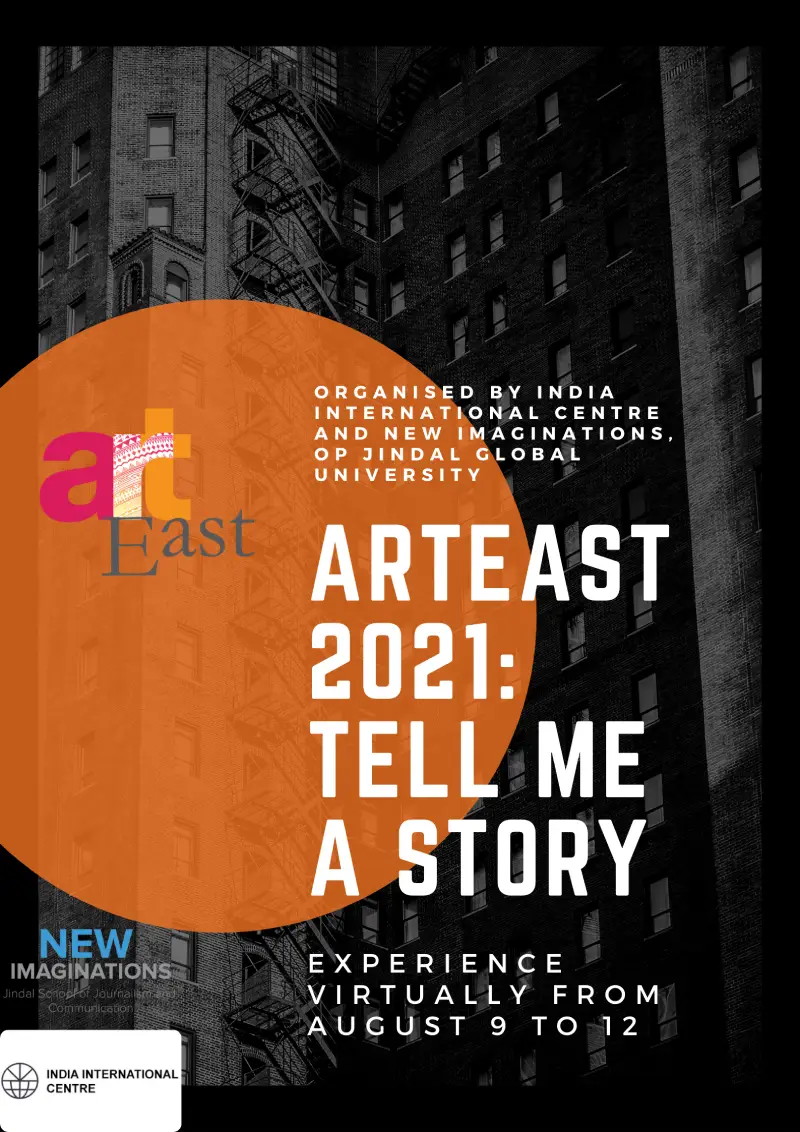
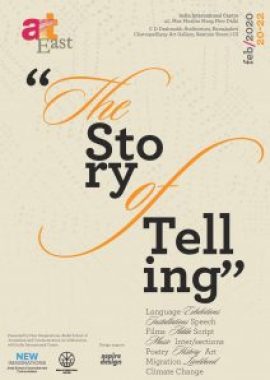
ARTEAST 2020
Curated by Kishalay Bhattacharjee, ArtEast 2020 focussed on Languages. Migration and displacement, an overarching theme of this festival, has had tremendous effect on people’s lives and languages and is perhaps one of the most invisible loss for people across many borders. “Languages” as linguist Ganesh Devy says “are extremely important because they are the holders of culture, of collective memory. The best way to conserve a language is to create livelihood opportunities for those who speak the language. Otherwise they will migrate to another language zone and their own language will disappear.”
India is one of the 4 countries in the world to have a large number of languages and multiple language families. Northeastern India itself has a huge language diversity but here too languages are dying. This then is the first ever festival to discuss, document and visualise a region linguistically that was once the ancient bridge between the two most populous regions of the world-South Asia and Southeast Asia.
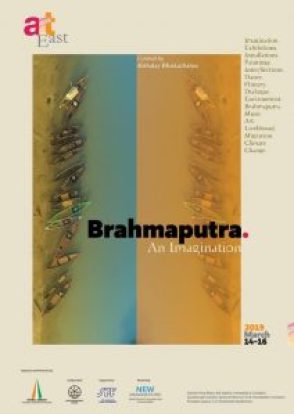
ARTEAST 2019
ArtEast, 2019 was a visual and historical journey of one of the largest rivers, from Tsangpo in Tibet to Siang in Arunachal Pradesh, Brahmaputra in Assam, Jamuna, Padma and Meghna in Bangladesh. Through art installations, video installations, poetry, dance, music and conversations, ArtEast 2019 was an attempt to imagine a ‘new commons’ and start a conversation on rivers and the region.
An underlying focus of the festival is on art, history, livelihood, migration, documentation and discussion. It began as an attempt to try present the peripheries of India and its neighbourhood from a more contemporary perspective
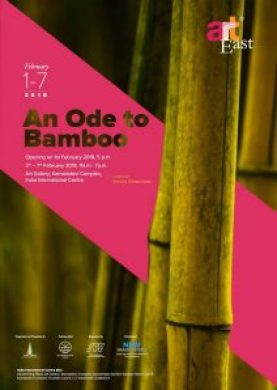
ARTEAST 2018
In 2018 we wanted to imagine the NE region and beyond the borders with a completely different lens and while searching for the dots we found the most enduring and resilient connecting thread is bamboo.
We tried to showcase how life in the region is inextricably connected with bamboo; livelihood, art, craft, dance, architecture and objects of everyday use. While researching on this theme, we encountered the seminal work of designer M P Ranjan who documented bamboo in the Northeast and believed that the people across the states of the region had a philosophy around bamboo. He continued his mission with the grass through a project called Chalo Katlamara in Tripura. This edition therefore, became a tribute to M P Ranjan.
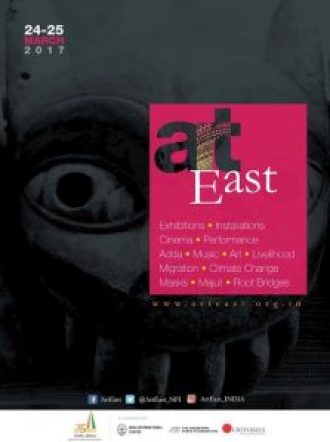
ARTEAST 2017
Launched in 2017, the first edition showcased Majuli Island in the Brahmaputra given its predicament agianst nature and the consequences thefore of migration and displacement. Pegged around Majuli, the festival documented other forms of art and engaged with invisible narratives from Partition to the lost art of Adda.
Arteast, therefore is a fringe art festival presenting emerging and leading local and international artists in all genres of the performing and visual arts.In the last 4 years has commissioned and produced over forty-five local productions across genres including theatre, music, cinema, expositions and installations.
ArtEast partners with amateur and professional artists to produce fringe art and invests in art education for young people.
ArtEast organises a diverse range of “Festival PLUS” activities to enhance engagement between artists and audiences including lecture demonstrations, masterclasses, workshops, symposia, exhibitions and meet-the-artist sessions.
One of the festival highlights has always been the traditonal tea-tasting sessions. In 1823 the first Assam tea was sent to England for public sale that led to the Brahmaputra Valley becoming the Empire’s favourite garden. It’s a story that can unlock many doors to the present challenges that region faces.
The Reach
ArtEast is one of IIC’s calendar highlights and has been widely covered by the national media. It has helped connect artists and performers, writers and scholars, practitioners and craftspeople between regions to ideate on art and livelihood.
Each edition of the festival is followed by publication of a journal. In 2019 Seminar magazine published a special edition exclusively on ArtEast. Currently the centre is building a digital archive of ArtEast productions to enable a visual journey for readers and viewers.
As part of the journey, we have had series of lectures or discussions as a feature of this experience. After the inaugural festival we started a year long lecture series titled Beyond Borders featuring one keynote speaker every quarter. Currently, River Dialogues has been going on following this year’s festival on the river. At the end of the series we propose to publish an anthology of the lectures.
ArtEast 2020 was held at the IIC on February 20-29, 2020. The 2019 edition was held on March 14-23, 2019 at the IIC, New Delhi. ArtEast 2018 was the second edition of the festival held in February 1-9 , 2018. The first edition was held on March, 23-30, 2017.
ArtEast 2021 was showcased virtually on IIC’s website from August 9 to 22.
Outcome
The outcome of the research is the festival and a journal. There are softcopies of all journals till 2020. The 2021 edition is under production.
Quarterly Dialogue leading to Occasional Papers
Concept Note:
The idea of this dialogue emerges from the IIC hosted annual festival, ArtEast. In 2019, the festival was conceived around the river Brahmaputra. During the inauguration, IIC Chairperson Mr. N. N. Vohra suggested that the festival should not be limited to just the few days of showcasing the art but the discussions to be taken forward so that the conversation continues. He also suggested that a section of the IIC Library could build a repository with content from the festival and other events concerning India’s Northeast.
River Dialogues is a series of talks and dialogue that hopes to challenge the imagination of the “mainstream”. If Ganga is a metaphor of India, the imagination of Brahmaputra is a cosmos, a shared space, and a constitution that links the local, national and transnational. The Brahmaputra with its many names- Tsangpo, Siang, Jamuna, Padma and Meghna is an invitation to perpetrate a new thinking, while renewing classical modes of thought.
The Brahmaputra-Ganga basin is not only the most densely populated river basin in the world, it is also one of the richest confluence of cultures that was nurtured by the ancient highway- the river. While the Ganga meanders, Brahmaputra is braided. They come together to form the largest delta in the world. It is not only the physical channels of water flowing into history and ecology but this imagination goes much beyond into a cosmos of plurality that seems to have been forgotten; a syncretism that flourished with people moving, migrating, trading, exchanging. This is an opening of streams of thought and conversations for a future with exciting possibilities.
The dialogue hopes to flow like tributaries into all other rivers like Narmada, Indus, Gomti, Periyar, Krishna, Godavari, Sabarmati etc. The river conversation is critical in re- evaluating histories, reconnecting civilisations, cultures and peoples, ideas and regions.
Till the fall of 2021, 5 dialogues have been organised and the recordings will be made available on a website under construction.
RIVER DIALOGUES
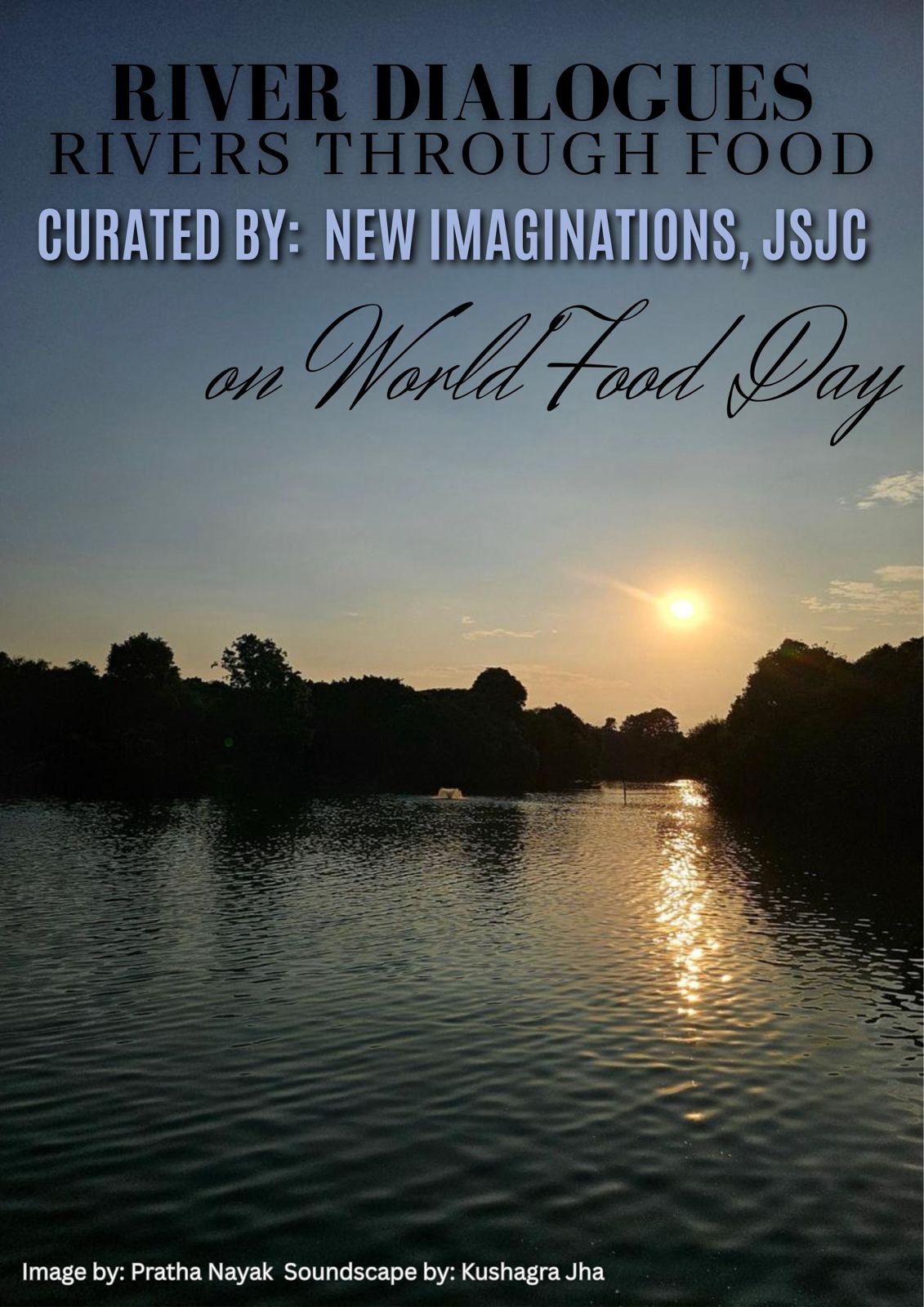
RIVER DIALOGUES
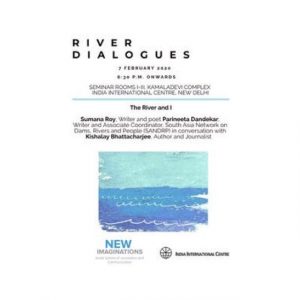
RIVER DIALOGUES
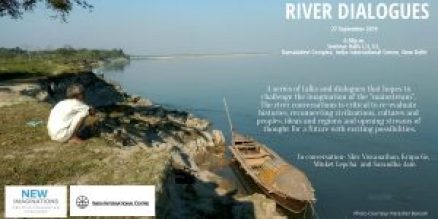
RIVER DIALOGUES
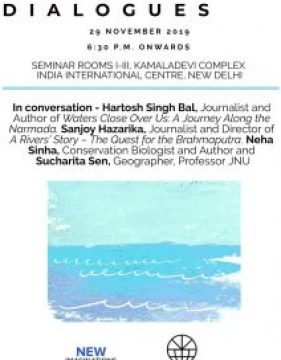
Hermann Hesse once wrote, ‘The River is everywhere.’ Hosted by New Imaginations Research Centre, this semester’s edition of River Dialogues tried to embody this very thought with a special focus on exploring rivers through the lens of food. The theme invited us to interpret rivers as living influences that shape how and what we eat, nourishing culinary traditions along their banks.
We walked into a space alive with photographs of rivers, all of which captured the many forms of the river. We began with ‘Paint Your Own River’ where everyone was transported right to their school-days where they could paint away without boundaries, without limits. Brushes, colors, rustling of paper, conversations, and laughter mingled as everyone tried to capture their river on paper. No one perhaps showed as much diligence as Professor Ishan who spent those few minutes with his brows furrowed in utter concentration as he worked with his crayons, producing a pretty little river scenery for us to marvel at.
Then, huddled up on the floor in a circle began our adda session- ‘Reading Rivers’ where people shared poems, songs, folklore, and even their own river stories with the room.
Our special guest, Prof. Abdul is in the words of Prof. Kishalay a ‘river-person.’ Our adda began with him sharing his experiences growing up along the banks of a river. His personal recollections on chars and Miyahs, food and migration, identity and resilience were profoundly thought-provoking to say the least.
“I’ve known rivers:
I’ve known rivers ancient as the world and older than the flow of human blood in human veins.”
Langston Hughe’s “The Negro Speaks of Rivers” recited by Prof. Rituparna echoed across the room, aligning with something our Dean Prof. Kishalay says as well- ‘We come from rivers.’
This was followed by the students of JSJC plunging in. From Utkarsh’s poems to Rithvik’s story about the Chenab through the famous Punjabi folk song Paar Channa De, the adda found its own meandering flow. Prof Ishan’s soulful rendition of Sujan Majhi Re was a show-stealer.
Samagra’s very own story about growing up in an army cantonment along the banks of the Tawi in Jammu reflected the unwavering faith people put in their rivers, believing that the river-spirit will protect them against all odds. The event curators Komal recited a few poems in Punjabi for us, and Chenab introduced the Fokir of the Sunderbans to us through a few excerpts from Amitav Ghosh’s ‘The Hungry Tide’.
Since no adda is ever truly complete without food, our Dean specially arranged for refreshments. As everyone started digging in and the whiff of prawns, paranthas, and samosas filled the air, the food too seemed to complement our theme- flavours of the rivers that sustain us.
We ended our session with a lively, heated debate on the Punjab-Haryana water sharing issue, a reminder that rivers are deeply political entities.
Like Prof. Kishalay always says, ‘We come from rivers.’ , the evening surrounded by conversations, stories, art, music, and reflections helped us find our ways back to the waters that shape and sustain us. Even as the evening drew to a close, rivers lingered on in our minds, a stark reminder of the fact that they need to be protected. Their survival after all is intricately linked to our known.
Media Infrastructures: Informalities and Marginalities
February 13-14, 2020 Venue: Big Bang Conference Room
O.P. Jindal Global (Institution of Eminence Deemed To Be University), Sonepat, Haryana.
Concept Note:
Media practices are enabled through the design, creation and organization of its infrastructures. The organizational aspect of infrastructures can have both formal and informal arrangements. Infrastructures are formally planned and operated through actors, institutions and policies of the state. Practices of informality emerge often to augment and compete with the formal deployments and operations . As such, the constraints and rigidness of the formal structures necessitate, if not pave the way for the rise of informal practices of media infrastructures. In addition to this, the arrangement of formal and informal media infrastructures bears the importance of location. While their presence in metropoles have specific significance and characteristics. However, in the peripheral locations such formal and informal arrangements are affected by challenges of geography, deeper history, communities, and interests therefore becoming a collective marginality within and vis-à-vis the metropole.
With this context, the approach of this workshop is on understanding the nuances of media infrastructures and practices in both formal and informal arrangements around them. This framework can help understand the emerging economies of media infrastructures and practices from a range of disciplinary and methodological perspectives. The focus therefore is to understand media infrastructures from the metropole and the peripheral locations, as an attempt to study and understand media across the margins of geographies and interests.
Scientific committee:
Bhattacharjee, Kishalay (O.P. Jindal Global (Institution of Eminence Deemed To Be University) Mishra, Rajiv K. (Jawaharlal Nehru University)
Parthasarathi, Vibodh (Jamia Millia Islamia/University of Helsinki) Sharma, Gurumayum Amarjit (Jawaharlal Nehru University) Singh, Khetrimayum Monish (The Centre for Internet & Society)

Religion and Society in Contemporary South Asia In collaboration with Oxford University Press March 4, 2020

We no longer live in a world disenchanted by the forces of modernity as it was once assumed to be. The contemporary world is a complex habitat where the traditional and the modern, the sacred and the profane, the transcendent and the immediate, crisscross each other constituting a relationship which need not necessarily be harmonious or tolerant. Violence based on religious differences and contested modes of spiritual identification is increasing every day, along with the common man’s desire for a peaceful and normal world, either in this life or in the afterlife.
The world still seems to be enchanted by the spells of the otherworldly, and we are yet to see whether this is a redemptive possibility or another gloomy turn in the complex history of modernity. The narratives of historical memory slip into the mythologies of self-assertion, imagined communities of the nation into the communalisms of various kinds.
In such an unprecedented situation, even the most common words we use in our everyday academic conversation—the words like religion, secularism, and modernity—lose their familiarity and call for serious introspection and redefinition. And this leads us to further ponder over the very basic questions of social life and collective survival, epistemological distinctions and ethical commitments. What do we mean by ‘religion’ when modern values themselves are held to be sacrosanct and quasi-religious concepts? Is not every religion or spiritual idea a product of society at a particular historical moment of its development, no matter how reverse this order of succession might be from the perspective of the initiated? Is the contemporary revival of religious discourse in the public life of the citizen a ‘return of the repressed’; a distorted manifestation of the understudied political theology of the modern state and its rituals of self-legitimisation? What place do minority rights have when the distinction between democracy and majoritarianism is blurred under the sway of mass religious movements? The questions are infinite, and the agreeable answers are yet to emerge.
Revolving around the South Asian context, with a focus on India where these questions have become more urgent than ever, Oxford Open Quote is an imagination of a space where no doors are closed, where conversations become an invitation to unbox, uncover, and unlearn.
The festival themed, Documentary Bears Witness brought together the best non- fiction films produced in South Asia in the last two years. This package of 12 documentaries was selected from the 63 films screened in Kathmandu as part of the prestigious Film Southasia (FSA) 2017 in November last year. Travelling Film Southasia (TFSA) 2018 was held from 1 to 4 August 2018 at the India International Centre.
Reflecting the historical legacy of documenting the current affairs that shape the life of people living in the region, TFSA 2018 encapsulated a flavour of the Subcontinent with films from Nepal, Afghanistan, Burma, India, Pakistan and Sri Lanka. The package included the award winners at FSA 2017 as well as other films selected to showcase the variety, treatment and intensity that marks the world of Southasian documentary and non-fiction. Among the films to be screened are Leena Manimekkalai’s award-winning film from India, Is it Too Much To Ask on two transgender individuals looking for a room to rent. A delicate documentary that treats a sensitive subject with lightness while exposing society’s prejudices.
32 Souls by Sai Naw Kham from Burma, recipient of the award for Best Film in the Student Category, FSA 2017, that presents an intimate glimpse at the forgotten history of a forgotten corner of South Asia, portraying the daily rhythms of the life of a simple woman as she bridges the old and new worlds. A hard-hitting documentary set in the sylvan hills of Northeast India, Fireflies in the Abyss by Chandrashekhar Reddy takes a claustrophobic journey with a child miner from Nepal who is trapped underground in a foreign land. Recipient of the Unicef Nepal Award for Best Documentary on Children’s Issues, FSA 2017, the film questions the failure of governance in their native lands that drives these children out by not providing them a secure future.
Rasan Piya directed by Niharika Popli is a moving portrait of the late vocalist Ustad Abdul Rashid Khan. A recipient of The Tareque Masud Best Debut Film Award 2017, the film documents the life of a 107 year-old classical singer who brings out the best of South Asia’s syncretic culture. The Shepherdess of the Glaciers directed by Stanzin
Dorjai Gya and Christiane Mordelet from Ladakh focuses on a threatened way of life, tradition and heritage being trampled by modern mores. Recipient of the Runnerup Award, FSA 2017, this is a stunningly lensed documentary about a self-sufficient woman and her world of icy loneliness.
The subcontinent is rife with conflict. There are wars that raged fiercely before burning themselves out. There are conflicts that continue to smoulder, and there are others in which homes are still set on fire driving hundreds of thousands of refugees across borders. In all of these conflicts, it is the civilians who are caught in the middle. They are ones who have to struggle to live and try not to die. Demons in Paradise by Jude Ratnam from Sri Lanka, and Soz: A Ballad of Maladies by Tushar Madhav and Sarvnik Kaur, joint winners of The Ram Bahadur Award for Best Documentary, FSA 2017 are seminal films about war: one in the northern edge of South Asia and one on its southern tip. One film is about a war that has spent itself and provided a need to come to terms with the brutality, to find closure and keep the memory alive. The other film is about an ongoing conflict that has trapped a people for decades, and how artists find an outlet in the arts and music.
Story telling Workshop for youth : Empowering, enhancing and skill building of the youth to tell their own stories
Concept:
At the heart of every issue is a human element that leads to the three most beautiful words in any language: What happened next? If you answer that question, you are a storyteller.
This is a series conceived as a platform to equip ourselves with skills to tell our stories effectively on issues that affect us in everyday lives.
The workshop is rooted in the idea of starting a network of storytellers, who can post their stories on a digital platform, www.ourstories.org.in that may help dispel and defy the stereotypical representation of people and places in the regions.
Compelling stories are negotiators of peace and development. They raise pertinent questions and thus demand action.
The first workshop was organised by NFI on Nov 3-5, 2017 and in February 2018 At the ANT’s campus at Rowmari, Chirang, Assam.
This workshop is for raising capacities of the youth to tell compelling stories that impact themselves as well as those around them. Change can happen only when we start telling our stories.
Why: Stories CONNECT us. They help us understand each other.
While sensational stories to do with terrorism or cultural exotica might occasionally make showcase the region to the rest of the world, it is multiple narratives that is critical for long-term peace and good governance in the region.
How: By sharing stories and learning effective ways to identify a story, pitch a story, tell a story and write a story.
Who: Community and voluntary sector leaders of grassroots organizations with a passion for communicating ‘development’. A group of 15 such young women and men from Meghalaya, Manipur, Arunachal Pradesh, Assam including Bodoland participated in the first workshop.